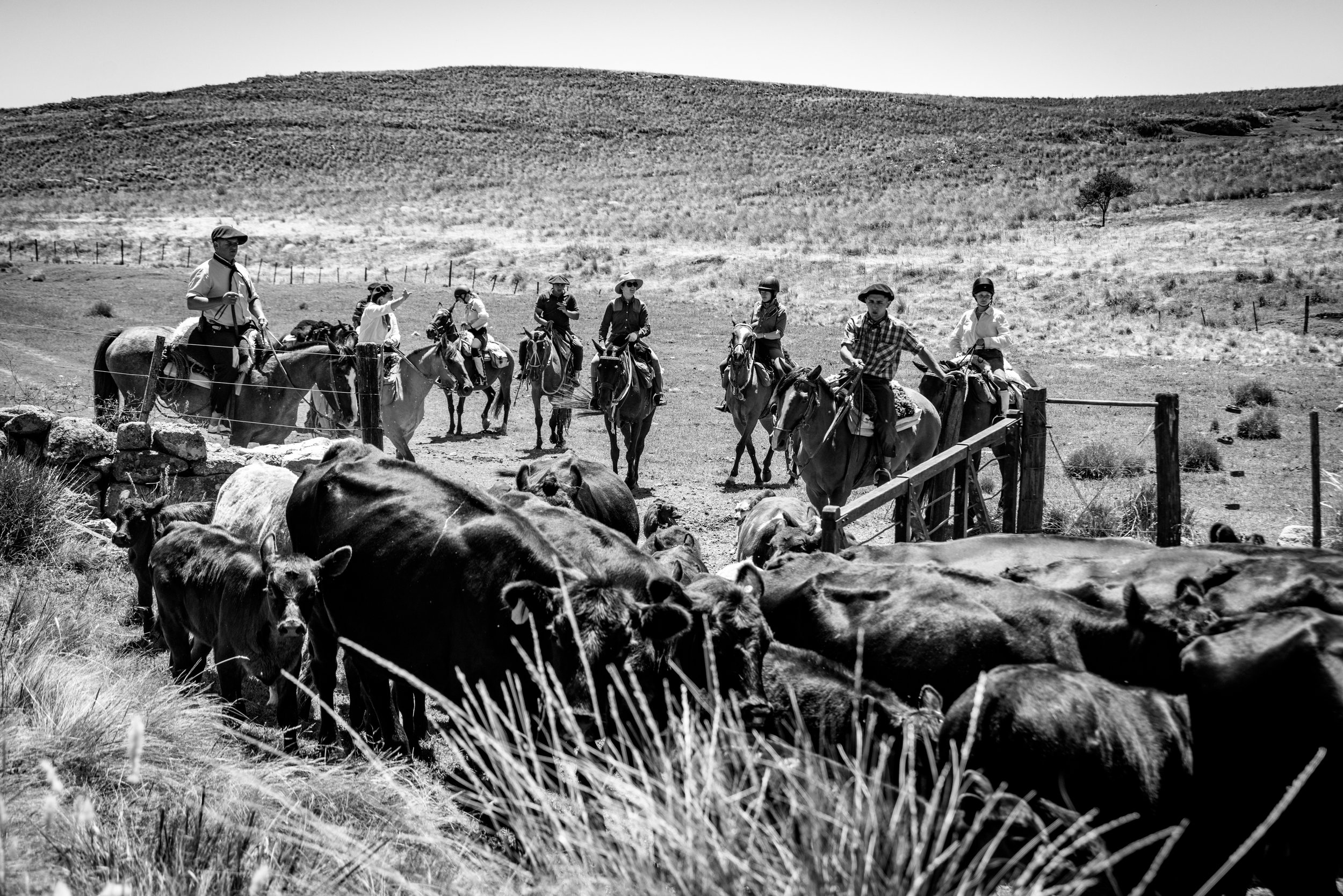‘Que estamos separando? What are we separating?’
´Las lindas de las feas. The beautiful from the ugly´
A year ago today, if you’d told me that I’d be chasing cows around a corral on foot, separating the ‘good looking’ from the ´ugly´ ones I´d have thought you were mad; but here we are.
For many across the globe, COVID-19 has put a halt on life, but work doesn´t stop on a farm. This week we pregnancy tested our Aberdeen Angus cows. With the horizon still aglow from a tangerine sunrise, six of us tacked up our horses and headed out to the campo in search of cows in order to herd them to our cattle station. With my ´compañero´ Pachi we headed out across the sierras. ´Go over that hill, and push any cows you find, over the other hill´ Pachi (unhelpfully) instructed; hills, that I might add, are as high, if not higher than Ben Nevis.
Wanting to prove my worth, I cantered over the crest and found some cows scattered over the rock and crag. My horse, Muchacho, much better versed in cow herding than me, and certainly more sure-footed, found his way through the difficult terrain. Nearly six months have passed and I still can´t whistle like the gauchos, but I have learnt to copy their various calls (and Spanish vocabulary that I definitely wasn´t taught as school). Pachi and I reconvened and pushed our cows together. Eventually three distinct lines of cattle from opposing directions converged and the six of us pushed the whole herd to the cattle station.
Once the cows were separated we quickly took up a station each in order to start testing. Georgie on her horse in the corral pushed 10-15 cows into a smaller corral; Pachi then moved one into the shoot; a gate was then shut behind it (my job); Headman Dani clamped the head; Kevin read out the number to Georgia on his chip reader; the vet entered and inserted her arm to ascertain how far along the cow as with her calf. The cow was then released, and the process started again, only stopping for an asado lunch, cooked by Daniel.
Work was over for the vet, but not for us. Dust and sweat mingled on our brows, as we then began to separate the female from the male calves, on foot. It was only halfway through this process that I realized the gauchos had rebenques, and we didn´t. Great. If you want to picture what this looks like, all you need imagine is a game of dodgeball, but with live cows.
Soon we had released all the males, and the next task was to find the 70 best-looking female cows, who were to be the estancia´s future mothers. Previously unbeknown to me, there are certain things you look for in a cow: normally short legs, but here longer ones so that they are able to easily traverse the rocky terrain. Also, a larger build and a ´nice face´ (I still don´t know what this actually means, but the gauchos seemed to). The rest were released, and these 70 would remain in the corral for the next three days to be weaned from their mothers (who would wreak havoc on the estancia trying to find them for the next 72 hrs.)
We rode home as the sun began to set, exhausted and filthy, but soaring in spirit. I reflected on the day, and my life here, wondering what the world will look like when our new calves enter it, and whether, after all of this, I´ll leave Los Potreros more fluent in Spanish or cow?
For enquiries about our guide program please send us your CV to marketing@estancialospotreros.com






